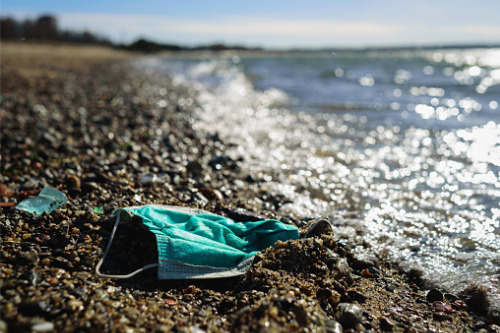

First off, as plants and facilities have closed, reopened, and/or adjusted their operations during government-mandated shutdowns related to the coronavirus pandemic, they’ve also been exposed to environmental impairment liability risks that will likely continue to impact them going into 2021.
“Prior to going into the pandemic, we were seeing claims related to indoor air quality begin to increase, particularly concerning mould and Legionella,” said Rani Christie, head of distribution for AGCS. “[After] March 2020, you had these facilities that were boarded up for some period of time ... and these large buildings with complex plumbing haven’t had the maintenance that you would under normal operations. That could potentially create an environment for humid and water-rich environments to sit and become stagnant, which will allow that bacteria to grow and then potentially get into the system.”
When these larger buildings are reopened after periods of shutdown, they face additional risks if their systems are not properly attended to. As such, Christie told Insurance Business that it’s important to open these facilities up – and particularly larger, more complex facilities that house a lot of employees – with this increased exposure in mind and address any potential bacteria-related issues before bringing people back to work.
Other environmental risks should also be on insureds’ minds going into the new year. Notably, the catastrophe seasons in North America have been far from quiet over recent years. The US has seen significant wildfire and hurricane activity – the latter of which broke records in 2020. By comparison, the past year brought a reprieve in major wildfire activity in Canada, but scientists agree that this is only temporary since long-term factors like climate change, historic terrain and fire management, population density, and socio-economic development in the wildland-urban interface are increasing the risk.
More broadly, the Canadian Institute for Climate Choices (CICC) recently reported that the cost of floods, wildfires, and other catastrophic events has spiked over the past decade. Citing information from the Insurance Bureau of Canada and the Canadian Disaster Database, the institute said that weather-related disaster costs have amounted to about 5% to 6% of Canada’s annual economic growth since 2010 – compared with an average of about 1% prior to 2010.
“As you look at some of the natural catastrophes that have taken place over the last few years, particularly as it relates to hurricanes and wildfires, the frequency and severity of these continue to increase year over year,” explained Christie. “From a property perspective, you have to take that in consideration, [though] being able to model and predict those events tends to be more challenging.”
In order to mitigate some of the uncertainty associated with catastrophe-related activity, insurers are reducing capacity in the property market, and increasing rates to ensure that they have sustainability in the property marketplace and can be there for clients in the long-term, continued Christie.
In the meantime, brokers should be prepared to help insureds navigate the many environmental challenges they face, alongside other emerging risks that will have a bearing on many industries.
On the property side, Christie suggests that they make sure their insurer partners are using key services, “particularly risk engineers who can go out and help assess a piece of property, by doing a survey and measuring exposure for earthquake or flooding, and then providing some preventative maintenance upfront to help ensure that when these events do come along, that the company has taken all the steps to mitigate that particular exposure.”
